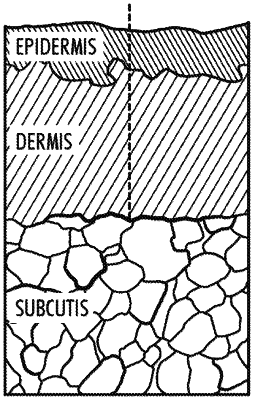| CPC A61B 18/203 (2013.01) [A61B 2017/00761 (2013.01); A61B 2017/00765 (2013.01); A61B 2018/00458 (2013.01); A61B 2018/0047 (2013.01); A61B 2018/00577 (2013.01); A61B 2018/2015 (2013.01)] | 15 Claims |

|
1. A method of tightening skin, comprising:
performing a fractional laser ablation in a treatment area of the skin, thereby removing a column of the skin and forming a columnar vacancy in the skin, the columnar vacancy having a perimeter defined by a first side and a second side opposite the first side, the first side and the second side each comprising an epidermal layer, a dermal layer, and a subcutaneous layer of skin;
contacting the first side of the columnar vacancy to the second side of the columnar vacancy, thereby closing the columnar vacancy;
applying an adhesive to the skin over the closed columnar vacancy, and
irradiating the closed columnar vacancy with a laser or broad band light through the applied adhesive;
wherein the epidermal layer, the dermal layer, and the subcutaneous layer of the first side of the columnar vacancy is aligned, respectively, with the epidermal layer, the dermal layer, and the subcutaneous layer of the second side of the columnar vacancy in a z-direction orthogonal to the surface of the skin and wherein the epidermal layers, the dermal layers, and the subcutaneous layers of the first and second sides of the columnar vacancy are aligned to form a substantially planar dermal-epidermal junction and a substantially planar dermal-subcutaneous junction across the first and second sides of the columnar vacancy when the columnar vacancies are closed.
|